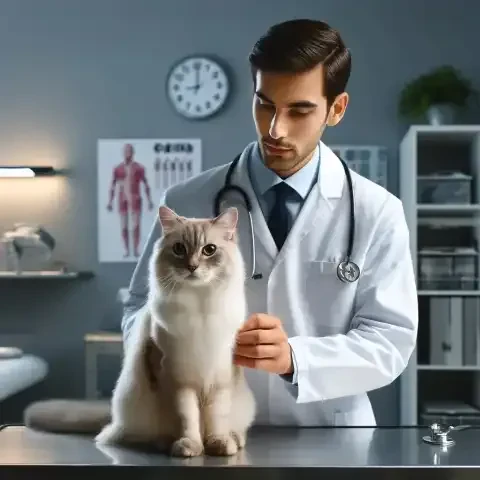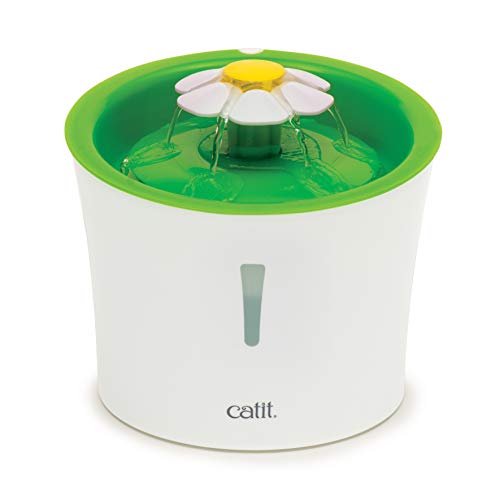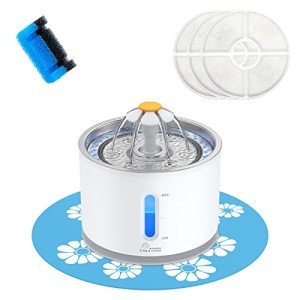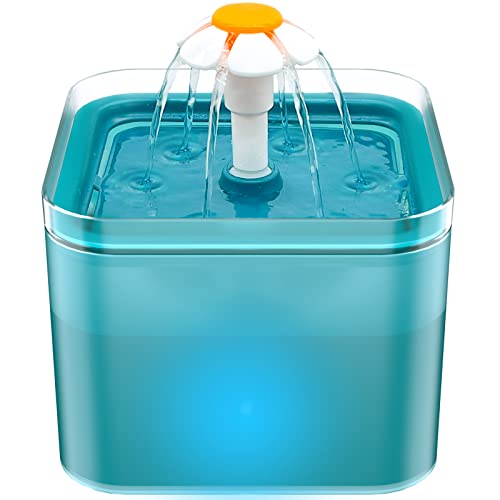Cats are more than just pets; for millions, they are cherished family members, sharing our homes and enriching our lives with their unique charm and companionship. This deepening bond between humans and cats has fueled an unprecedented focus on feline well-being. No longer are cats simply viewed as independent creatures needing minimal care; we now recognize the intricate tapestry of their physical and emotional needs, driving a revolution in how we approach their health and care. The field of feline health is not static; it is a vibrant and rapidly evolving landscape, constantly being reshaped by groundbreaking discoveries and innovative technologies. From sophisticated diagnostics to targeted therapies, from preventative strategies tailored to individual needs to a deeper understanding of feline behavior, we are witnessing a remarkable transformation in our ability to care for our feline companions. This article aims to explore these exciting advancements, to illuminate the cutting-edge innovations that are revolutionizing the world of feline health and care, paving the way for longer, healthier, and happier lives for our beloved cats. We will journey through the latest breakthroughs in diagnostics, therapeutic interventions, preventative care strategies, nutritional science, technological aids, and our ever-growing understanding of feline behavior, revealing how these advancements are collectively shaping a brighter future for feline welfare.
One of the most impactful areas of innovation lies in revolutionizing diagnostics, enabling earlier and less invasive detection of feline diseases. Imagine a future where cancer, a devastating diagnosis for any cat owner, can be detected through a simple blood test, long before it becomes clinically apparent. This is the promise of liquid biopsies. Traditionally, diagnosing cancer often requires invasive procedures like surgical biopsies or needle aspirates to obtain tissue samples for analysis. Liquid biopsies, however, offer a less invasive alternative, analyzing blood or urine samples to detect circulating tumor cells or tumor DNA fragments – biomarkers that are shed by cancer cells. The advantages are manifold. Liquid biopsies are significantly less invasive, causing minimal stress to the cat. They hold the potential for earlier cancer detection, allowing for treatment to begin at a stage when it is more likely to be effective. Furthermore, liquid biopsies can be used to monitor treatment effectiveness, providing real-time insights into how well a cancer therapy is working and allowing for adjustments as needed. While still in development for many feline cancers, research in this area is rapidly advancing, holding immense promise for transforming early cancer diagnosis in cats.
Complementing these biochemical advancements are leaps in advanced imaging techniques, providing veterinarians with ever-clearer views inside the feline body. Improvements in ultrasound and MRI technology are yielding images with unprecedented resolution and detail. Furthermore, portability and accessibility of these advanced imaging modalities are increasing, bringing sophisticated diagnostics to more veterinary practices. But the innovation extends beyond just hardware. Artificial intelligence (AI) is now being harnessed to assist in image analysis. AI algorithms are being trained to analyze radiographic and ultrasound images with remarkable speed and accuracy, often surpassing the capabilities of the human eye in detecting subtle abnormalities. This AI-assisted image analysis can improve diagnostic accuracy, reduce the risk of human error, and expedite the diagnostic process, allowing for faster treatment initiation. These advancements in imaging are proving invaluable in diagnosing a wide range of feline conditions, from subtle cardiac disease and abdominal masses to complex neurological conditions, allowing for more precise and timely interventions.
Another area of significant diagnostic advancement is point-of-care diagnostics. Imagine your veterinarian being able to perform rapid and highly accurate diagnostic tests right in the clinic, providing results within minutes, rather than waiting days for lab results. This is becoming a reality with advancements in in-clinic diagnostic testing. Sophisticated point-of-care tests are now available for common feline diseases, including kidney disease, infectious diseases like feline leukemia and feline immunodeficiency virus, and various metabolic disorders. The benefits are clear: increased accessibility to rapid and accurate diagnoses, especially crucial in urgent care situations. For remote veterinary practices or in-home visits, point-of-care diagnostics can be transformative, bringing advanced diagnostic capabilities to locations where access to traditional laboratory services might be limited. The speed of diagnosis allows for faster treatment initiation, potentially improving patient outcomes and reducing the progression of disease.
Beyond diagnostics, the field of feline therapeutics is experiencing breakthroughs that offer more targeted and effective treatments. Monoclonal antibody therapy represents a paradigm shift in managing chronic conditions and pain in cats. Unlike traditional drugs that often have broad systemic effects, monoclonal antibodies are highly targeted, designed to specifically bind to and neutralize a particular target molecule involved in a disease process. A prime example of this innovation in feline medicine is frunevetmab, marketed as Solensia, a revolutionary monoclonal antibody therapy for feline osteoarthritis pain. It specifically targets nerve growth factor (NGF), a key molecule involved in osteoarthritis pain signaling, providing effective and long-lasting pain relief with minimal side effects. The success of monoclonal antibodies in osteoarthritis is paving the way for their exploration in managing other chronic feline conditions, such as inflammatory bowel disease and chronic kidney disease, holding immense promise for targeted and effective therapies for these prevalent feline ailments.
In the fight against feline cancer, too, therapeutic frontiers are expanding rapidly. Traditional chemotherapy, while still valuable, is being complemented and in some cases surpassed by targeted therapies and immunotherapy. Targeted therapies involve drugs that specifically attack cancer cells by targeting specific molecules or pathways that are crucial for their growth and survival, minimizing damage to healthy cells. Immunotherapy aims to harness the cat’s own immune system to fight cancer. These therapies can stimulate the immune system to recognize and destroy cancer cells more effectively. Furthermore, radiation therapy techniques are becoming increasingly precise, allowing for more targeted radiation delivery to tumors while minimizing damage to surrounding healthy tissues, reducing side effects and improving treatment outcomes. Surgical techniques are also evolving, with minimally invasive surgical approaches becoming more widely adopted for tumor removal, leading to smaller incisions, less pain, and faster recovery times for feline patients.
Looking further into the future, gene therapy and personalized medicine are emerging as exciting frontiers in feline therapeutics. Gene therapy, still in its early stages in feline medicine, holds the potential to treat inherited feline genetic diseases by correcting faulty genes. While research is ongoing, gene therapy offers a potential cure for conditions that were previously considered untreatable, such as certain forms of retinal degeneration leading to blindness. The concept of personalized medicine, tailoring treatment plans based on an individual cat’s unique genetic profile, is also gaining traction. As our understanding of feline genetics deepens, personalized medicine promises to optimize treatment efficacy and minimize adverse drug reactions by selecting therapies that are most likely to be effective based on a cat’s genetic makeup.
Finally, innovative drug delivery systems are enhancing medication administration for cats, often a significant challenge. Transdermal medications, such as patches or gels applied to the skin, are simplifying medication administration, particularly for cats who are notoriously resistant to taking pills. These transdermal formulations allow for medication absorption through the skin, bypassing the need for oral administration. Pharmaceutical companies are also focusing on improving medication palatability, developing oral liquids and palatable formulations that are more appealing to cats, increasing medication compliance and ensuring that cats receive the treatment they need. Long-acting injectables are another exciting development, reducing the frequency of medication administration, particularly beneficial for managing chronic conditions requiring long-term treatment, minimizing stress for both cats and owners.
Beyond treating illness, a significant paradigm shift is occurring in feline health, moving towards proactive preventative care, emphasizing wellness and early detection. The traditional annual check-up is being augmented by more comprehensive wellness exams, incorporating age-related screenings and routine screening for common feline diseases, even in seemingly healthy cats. Early detection protocols are being developed and implemented for prevalent feline conditions like kidney disease, heart disease, and diabetes, allowing for interventions to begin earlier in the disease process, often slowing progression and improving long-term outcomes. The importance of establishing baseline health data early in a cat’s life is being increasingly recognized. Collecting baseline data during kittenhood and young adulthood, and longitudinally monitoring changes over time, provides a valuable reference point for detecting subtle deviations from a cat's individual “normal,” facilitating earlier detection of health issues.
Vaccination strategies are also becoming more refined, moving beyond a one-size-fits-all approach. Advanced vaccination technologies, such as vector vaccines and recombinant technology, are leading to safer and more effective vaccines. These newer vaccines often utilize fewer adjuvants, substances that enhance the immune response but can sometimes contribute to side effects, leading to a reduced risk of adverse reactions. Tailored vaccination protocols are gaining traction, recognizing that vaccination needs can vary based on individual cat lifestyles and risk factors. Indoor-only cats, for example, may have different vaccination needs compared to cats with outdoor access. Risk-based vaccination protocols aim to personalize vaccination plans based on a cat’s individual circumstances, minimizing unnecessary vaccinations while ensuring optimal protection. Excitingly, research is exploring the potential for therapeutic vaccines, vaccines that not only prevent infection but also potentially treat existing infections, such as in the case of Feline Leukemia Virus, opening new avenues for disease management.
Parasite prevention is also becoming more personalized, moving away from blanket recommendations towards risk-based parasite control. Tailoring parasite prevention strategies based on individual cat lifestyles, geographic location, and risk assessment is becoming increasingly common. Indoor-only cats in low-risk areas may require less aggressive parasite prevention compared to outdoor cats in regions with high parasite prevalence. New generations of parasiticides are being developed, offering improved safety and efficacy. These novel preventatives often boast broader spectrum coverage, protecting against a wider range of parasites, and improved safety profiles with reduced risk of adverse reactions. An integrated approach to pest management is also gaining emphasis, combining preventative medications with environmental control strategies to minimize parasite exposure in the home and surrounding environment, creating a multi-pronged approach to parasite control.
Nutrition is increasingly recognized as a cornerstone of feline health, fueling feline well-being from the inside out. The concept of personalized nutrition, tailoring diets to specific life stages, breeds, and health statuses, is gaining momentum. Recognizing that nutritional requirements vary significantly based on age, activity level, breed predispositions, and existing health conditions, customized diets are becoming more readily available. Looking ahead, nutrigenomics, the study of how genes and nutrients interact, holds the potential to revolutionize feline nutrition even further. Dietary recommendations based on a cat’s genetic makeup could optimize nutrition for individual cats based on their unique genetic predispositions and nutritional needs.
The feline gut microbiome, the complex community of microorganisms residing in the digestive tract, is another area of intense research. The gut microbiome is increasingly recognized as playing a crucial role in feline immunity, digestion, nutrient absorption, and overall health. Prebiotics, probiotics, and postbiotics, supplements designed to support a healthy gut microbiome, are gaining popularity in feline nutrition and disease management. Fecal microbiota transplantation (FMT), transferring fecal microbiota from a healthy donor to a recipient cat, is emerging as a novel therapeutic approach for certain feline gastrointestinal conditions, aiming to restore a balanced and healthy gut microbiome.
The quest for sustainable and healthy feline nutrition is also driving innovation in protein sources. Insect-based protein in cat food is gaining traction, offering a more sustainable and potentially hypoallergenic protein alternative compared to traditional meat sources. Plant-based protein alternatives are also being explored, catering to growing consumer interest in plant-based diets, while ensuring complete and balanced nutrition for obligate carnivores like cats, with careful attention to essential nutrients like taurine. Overall, there is a growing focus on food quality and ingredient transparency in the feline nutrition industry, with pet owners demanding higher quality ingredients and greater transparency about food sourcing and manufacturing processes. Functional ingredients and nutraceuticals are also being increasingly incorporated into cat food formulations, offering targeted health benefits. Omega-3 fatty acids, known for their anti-inflammatory properties, are being added to support joint health, skin health, and cognitive function. Antioxidants and immune-boosting nutrients are being included to support overall immune system health. Joint supplements and other targeted nutraceuticals are being used to address specific health concerns and promote feline well-being.
Technological advancements are not only revolutionizing diagnostics and therapeutics but also enhancing day-to-day cat care. Wearable technology, in the form of smart collars and wearable sensors, is providing unprecedented insights into feline health and activity. These devices track activity levels, sleep patterns, and even vital signs like heart rate and respiration rate, providing valuable data for monitoring feline well-being. Wearable technology can aid in the early detection of subtle changes in behavior or physiology that may indicate illness or stress, allowing for prompt intervention. Data-driven insights from wearable technology can be used to personalize cat care and preventative measures, tailoring exercise recommendations, dietary adjustments, and even environmental modifications based on an individual cat’s unique data profile. Smart home devices and automated pet care systems are also enhancing convenience and improving feline well-being. Automated feeders and water fountains ensure consistent feeding schedules and promote hydration, while smart litter boxes can monitor urine output and weight, providing early warning signs of potential health issues. Interactive toys and automated play devices help combat boredom and promote physical activity, particularly beneficial for indoor cats.
Telemedicine and virtual veterinary care are expanding access to veterinary services and improving convenience for cat owners. Telemedicine platforms allow for virtual consultations, increasing access to veterinary advice, particularly for routine check-ups, follow-up appointments, and for cat owners in remote areas. Remote monitoring of chronic conditions is becoming increasingly feasible through telemedicine, allowing veterinarians to track patient progress and adjust treatment plans remotely. AI-powered symptom checkers and triage tools are also emerging, although it is crucial to emphasize that these tools are not substitutes for professional veterinary consultation, but rather can be used as initial triage aids to help cat owners determine the urgency of seeking veterinary care.
Finally, our understanding of feline behavior is constantly evolving, moving beyond simplistic views and towards a more nuanced appreciation of feline communication and needs. Advances in feline behavior research are providing deeper insights into feline communication, including vocalizations, body language, and pheromones, helping owners better understand their cats' signals and needs. Recognizing subtle signs of stress, anxiety, and pain in cats is becoming increasingly emphasized, as cats often exhibit subtle and easily missed signs of distress. There is a growing emphasis on feline-centric environmental enrichment, creating home environments that cater to a cat’s natural behaviors and needs, including vertical space, scratching surfaces, and opportunities for play and exploration. Innovative approaches to behavior modification and training are being developed, focusing on positive reinforcement training techniques specifically tailored for cats, recognizing that cats respond best to reward-based methods. Environmental enrichment strategies, such as providing vertical space, puzzle feeders, and scent enrichment, are being used proactively to reduce stress, boredom, and prevent behavior problems. Pharmacological interventions and behavioral medications, such as anxiety medications and antidepressants, are being used responsibly and judiciously, in conjunction with behavioral modification and environmental enrichment, for cats with significant behavioral challenges. Technology is also playing a role in behavior management, with automated feeders and interactive toys helping manage feeding schedules and provide stimulation. Wearable sensors can monitor activity levels and identify behavioral patterns associated with stress or anxiety, and app-based resources and virtual behavior consultations are providing owners with readily accessible behavioral support and guidance.
Despite the remarkable progress in feline health and care, challenges remain. Accessibility and affordability of these innovations are significant concerns. Advanced diagnostics and treatments often come with a higher price tag, creating a barrier to access for many cat owners. Exploring ways to make these innovations more accessible and affordable is crucial, potentially through insurance models, financial aid programs, and innovative pricing strategies. Ethical considerations are also paramount. Ensuring that innovations are truly beneficial for feline welfare, and not solely driven by human convenience or profit, is essential. Ethical concerns related to emerging technologies like gene therapy, AI in diagnostics, and the use of personal data must be carefully considered and addressed. Maintaining the vital human-animal bond in an increasingly technology-driven world is also crucial, ensuring that technology enhances, rather than replaces, the compassionate and hands-on care that cats need.
Looking to the future, the landscape of feline health and care is poised for continued and exciting transformation. Further advancements in personalized medicine and feline genomics will likely revolutionize treatment approaches. We can expect the development of even more effective and less invasive treatments for feline diseases. The integration of AI and machine learning for proactive health monitoring and personalized care recommendations will likely become increasingly sophisticated and widespread. And, perhaps most importantly, the continued focus on preventative care and holistic wellness approaches will further shift the paradigm towards proactive and comprehensive feline healthcare.
The future of feline health and care is undeniably bright, promising longer, healthier, and even happier lives for our beloved cats. By embracing these remarkable innovations, staying informed about the latest advancements, and working in partnership with dedicated veterinary professionals, we can collectively ensure that our feline family members thrive, enriching our lives with their purrs and companionship for many years to come.







